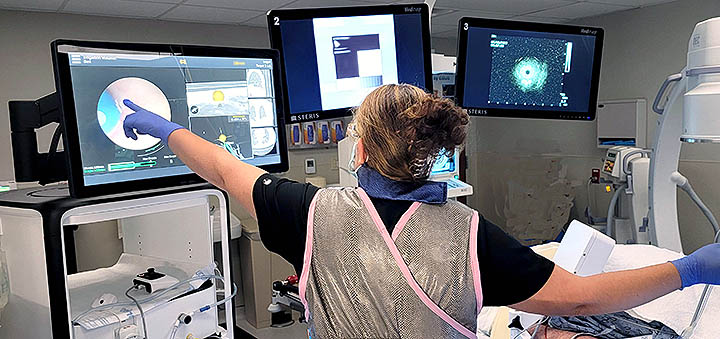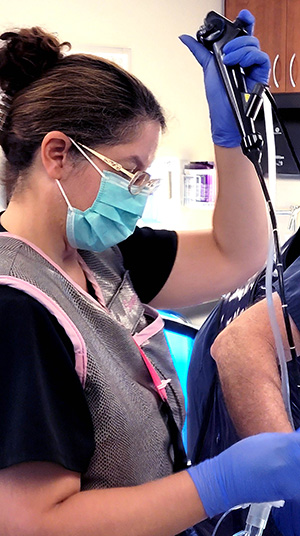
An impactful innovation that holds promise to fight lung cancer is now in use at Parkridge Medical Center as the hospital offers robotic-assisted lung bronchoscopy.
The goal of the new technology is to provide visualization and access to small and hard-to-reach nodules in the periphery of the lung. The technology is aimed at helping physicians achieve more-accurate diagnosis of lung nodules which means patients can begin treatment earlier. The technology integrates the latest advancements in robotics, software, data science, and endoscopy (the use of small cameras and tools to enter the body through its natural openings).
"Lung cancer is the leading cause of cancer deaths worldwide, in part because it has no symptoms in its early stages,” said Minerva Covarrubias, MD, a board-certified pulmonologist at Parkridge Medical Center who has extensively trained on the technology and performs the procedure at Parkridge Medical Center.

Nearly 80 percent of people diagnosed with lung cancer do not survive the disease, in part because it is often found at an advanced stage," Dr. Covarrubias said. "There are a variety of diagnostic options currently available for lung cancer, but many have limitations that can lead to false positives, false negatives, or side effects such as pneumothorax (collapsed lung) and hemorrhage which may extend hospital stays and increase health care costs."
Parkridge's robotic bronchoscopy technology utilizes a familiar controller-like interface that physicians use to navigate the flexible robotic endoscope to the periphery of the lung with advanced reach, vision, and control. Combining traditional endoscopic views into the lung with computer-assisted navigation based on 3-D models of the patient's own lung anatomy, the platform provides physicians with continuous bronchoscope vision throughout the entire procedure.
“As this technology provides advanced reach, vision and control for bronchoscopic procedures, it holds potential to help make a diagnosis earlier,” Dr. Covarrubias said. “We are excited about the capability to offer a more hopeful future for our patients with lung cancer.”
$webqFacilityNumber
Need a Physician?